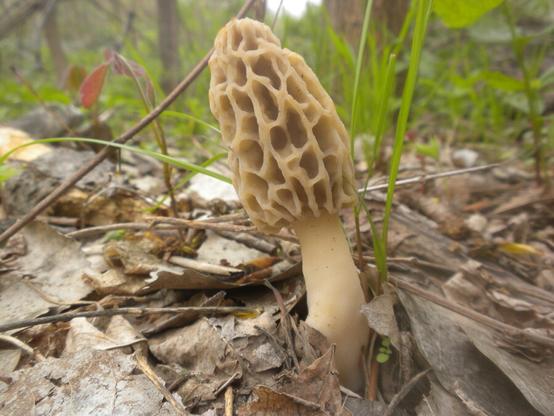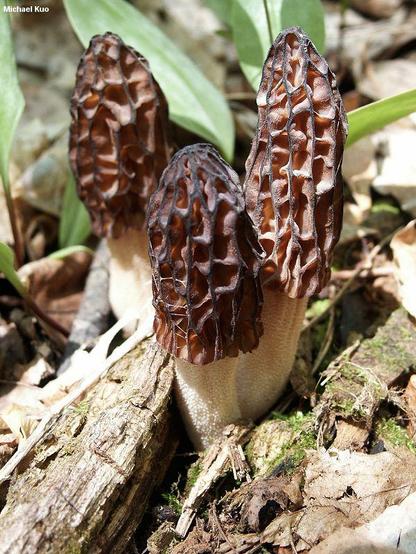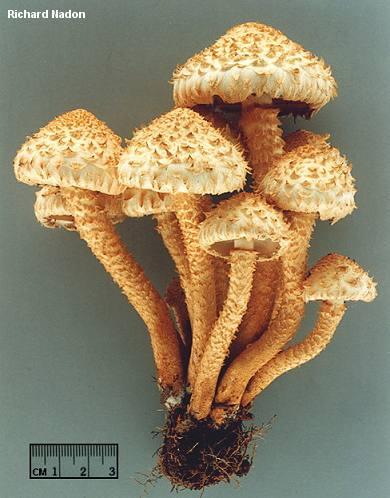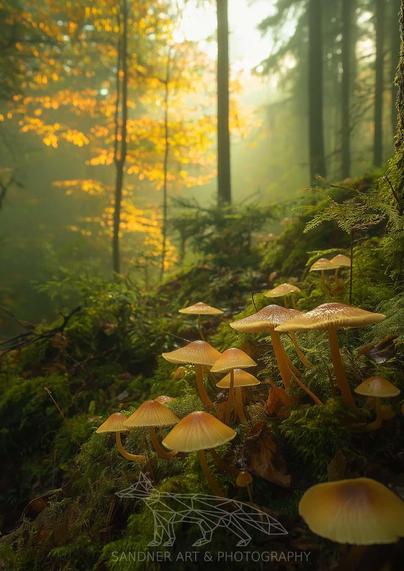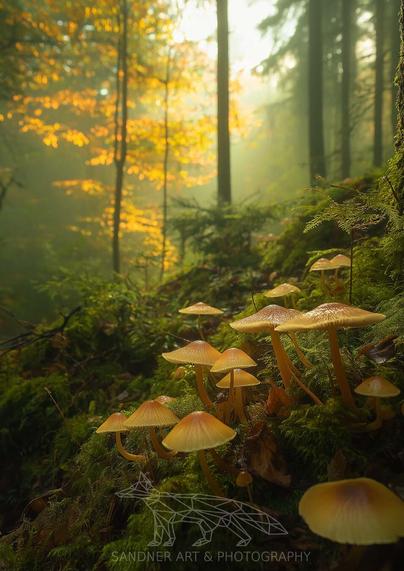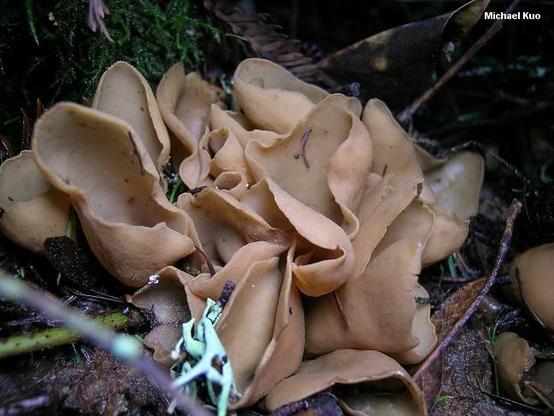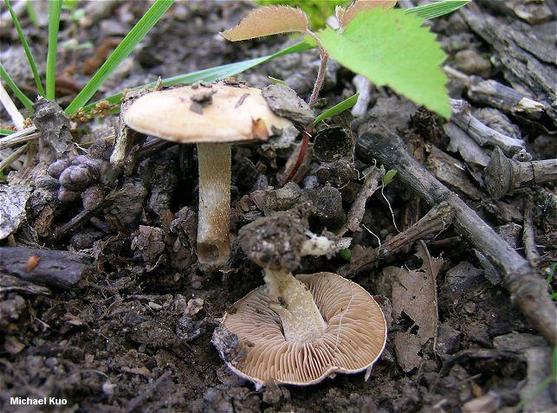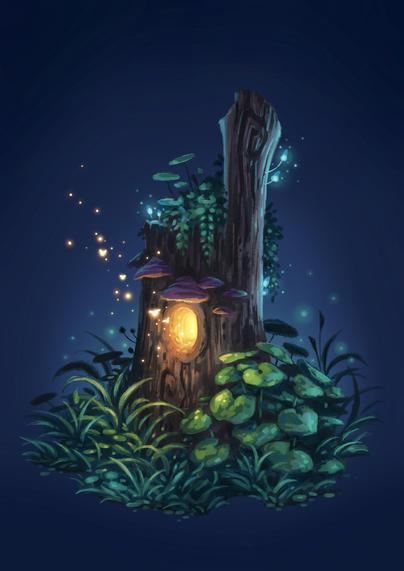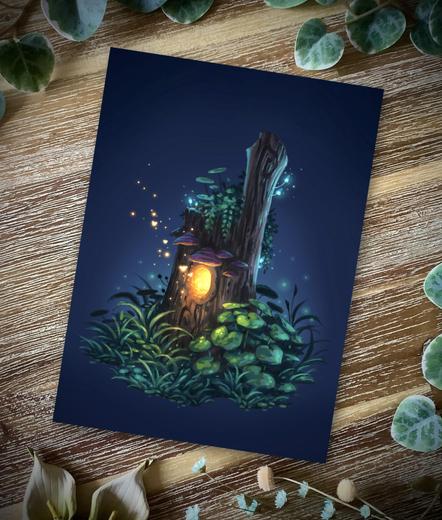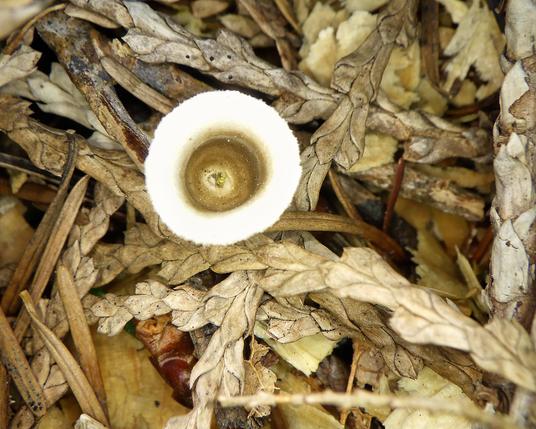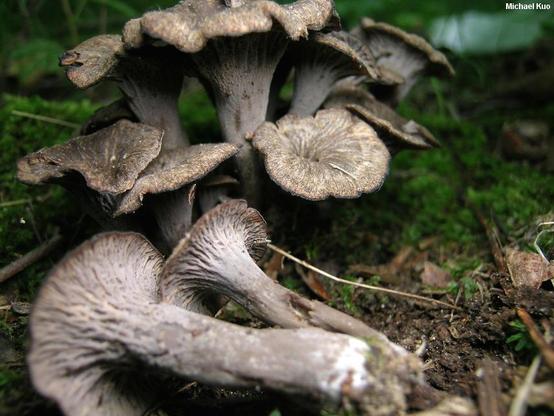Pholiota squarrosa
https://www.mushroomexpert.com/Pholiota_squarrosa.html
Ecology: Saprobic and possibly parasitic; growing in clusters on the wood of hardwoods or conifers; often found at the bases of living or dead trees; especially common on aspens and spruces in the Rocky Mountains; summer and fall; fairly widely distributed in North America.
Cap: 3-12 cm; convex, becoming broadly convex or broadly bell-shaped; dry; yellowish underneath conspicuous buff to tawny scales.
Gills: Attached to the stem or beginning to run down it; close or crowded; whitish to yellowish when young, becoming greenish yellow and eventually rusty brown; at first covered by a partial veil.
Stem: 4-12 cm long; up to 1.5 cm thick; dry; with an ephemeral ring or ring zone; yellowish, sometimes becoming brown to reddish brown from the base up; covered with conspicuous buff to tawny scales.
Flesh: Whitish to yellowish.
Odor and Taste: Odor not distinctive or strongly of garlic; taste mild or somewhat unpleasant. The odor of my collections in Colorado is quite strong and quite distinctive--like a cross between garlic and lemon.
Chemical Reactions: KOH negative on cap surface.
Spore Print: Cinnamon brown.
Microscopic Features: Spores 6-8 x 4-5 ; smooth; more or less elliptical; with an apical pore; reddish brown in KOH. Pleurocystidia clavate to clavate-mucronate or subfusiform; some with refractive contents in KOH; to 45 x 14 . Cheilocystidia subfusiform to fusoid-ventricose or clavate; to 43 x 15 . Pileipellis an interwoven layer of cylindric hyphae with clavate to fusoid-ventricose terminal elements. Clamp connections present.
REFERENCES: (Batsch) Kummer, 1871. (http://194.203.77.76/librifungorum/Image.asp?ItemID=21&ImageFileName=0243b.jpg" TARGET="new 1821; http://194.203.77.76/librifungorum/Image.asp?ItemID=33&ImageFileName=SyllogeFungorum5-749.jpg" TARGET="new 1887; Overholts, 1927; http://www.hti.umich.edu/cgi/t/text/text-idx?sid=6bd98d17c290d2575057a9d5d63f6584;c=fung1tc;idno=AGJ9559.0001.001" TARGET="new">Smith & Hesler, 1968; Farr, Miller & Farr, 1977; Smith, Smith & Weber, 1979; http://www.svims.ca/council/Pholio.htm" TARGET="new">Scates & Gospodnetich, 1981/2003; Arora, 1986; Jacobsson, 1989; States, 1990; Lincoff, 1992; Evenson, 1997; Barron, 1999; McNeil, 2006; Miller & Miller, 2006.) Herb. Kuo 08150718.
<B>Further Online Information:</B>
http://quod.lib.umich.edu/cgi/t/text/pageviewer-idx?c=fung1tc;cc=fung1tc;rgn=full%20text;idno=AGJ9559.0001.001;didno=AGJ9559.0001.001;view=image;seq=00000195" TARGET="new">Pholiota squarrosa in Smith & Hesler (1968)<BR>http://www.rogersmushrooms.com/gallery/DisplayBlock~bid~6634.asp" TARGET="new">Pholiota squarrosa at Roger's Mushrooms
</TD>
<TD WIDTH="22"> </TD>
<TD WIDTH="198">
<FONT FACE="Arial, Verdana, Sans Serif" SIZE="-2">
<BR>
<IMG SRC="images/nadon/nadon_pholiota_squarrosa_01_thumb.jpg" WIDTH="198" HEIGHT="253" BORDER="0" ALT="Pholiota squarrosa">
<IMG SRC="images/kuo3/pholiota_squarrosa_02_thumb.jpg" WIDTH="198" HEIGHT="149" BORDER="0" ALT="Pholiota squarrosa">
<IMG SRC="images/kuo3/pholiota_squarrosa_03_thumb.jpg" WIDTH="198" HEIGHT="149" BORDER="0" ALT="Pholiota squarrosa">
<P ALIGN="right"><IMG SRC="images/kuo3/pholiota_squarrosa_01_thumb.jpg" WIDTH="198" HEIGHT="127" BORDER="0" ALT="Pholiota squarrosa">
<IMG SRC="images/kuo3/pholiota_squarrosa_04_thumb.jpg" WIDTH="198" HEIGHT="212" BORDER="0" ALT="Pholiota squarrosa">

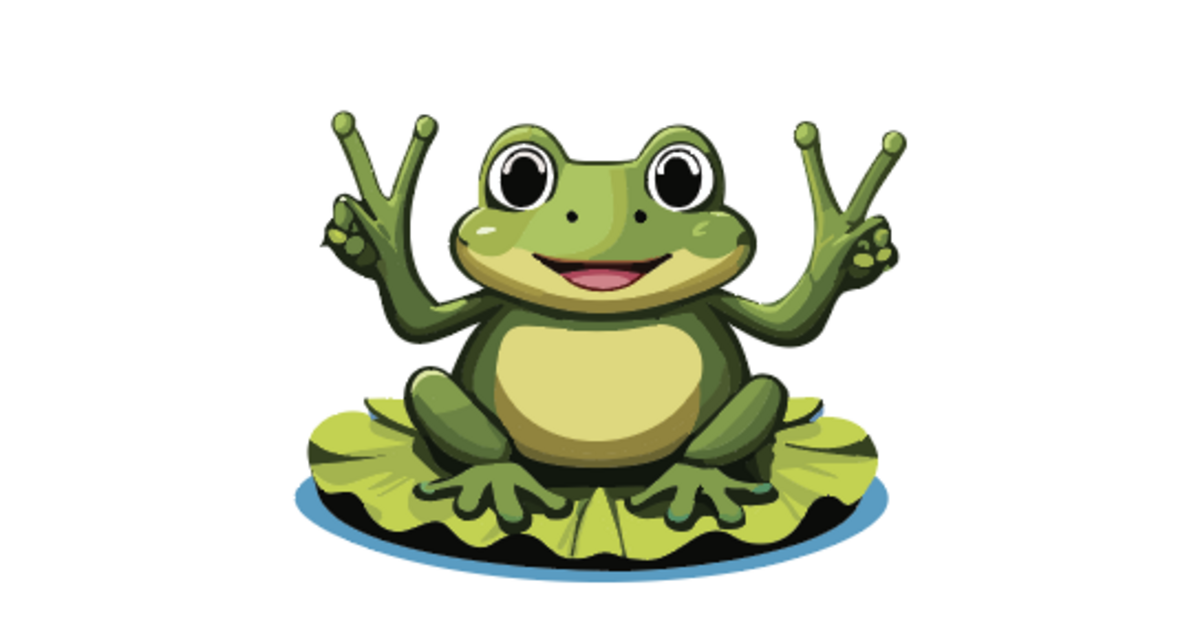

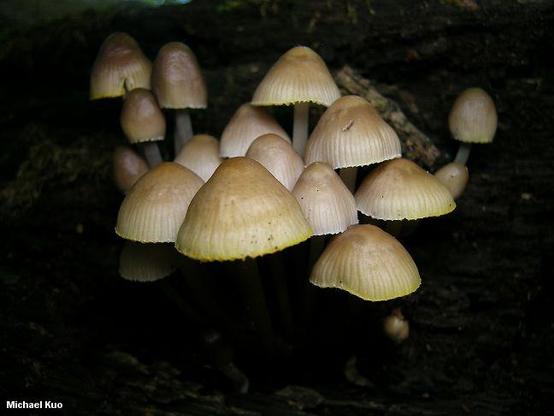
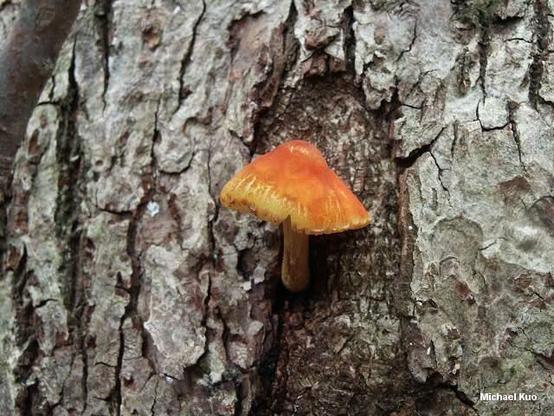
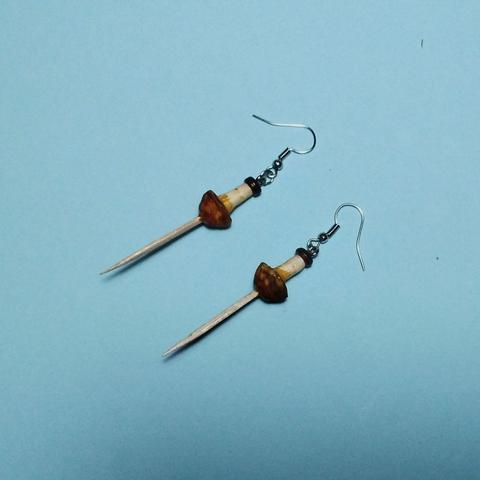
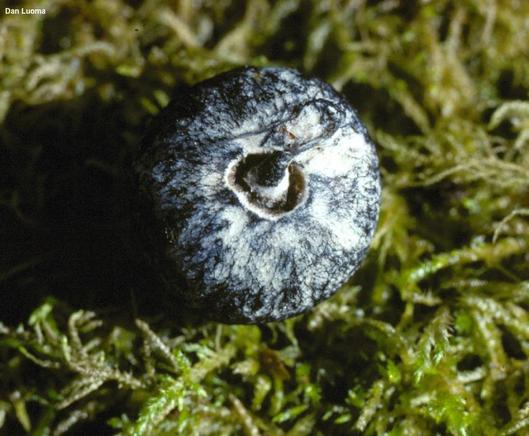



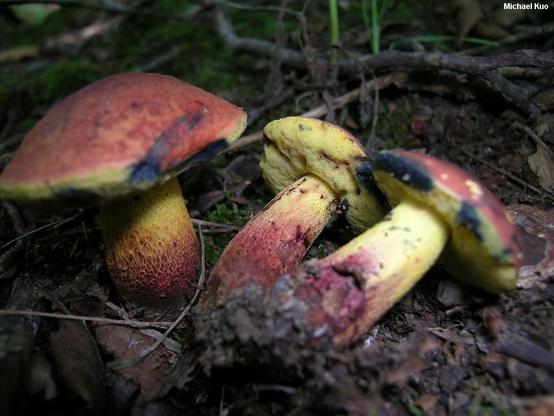


 But there’s still others left, so don’t hesitate to have a look via the link below! :3 ]
But there’s still others left, so don’t hesitate to have a look via the link below! :3 ]
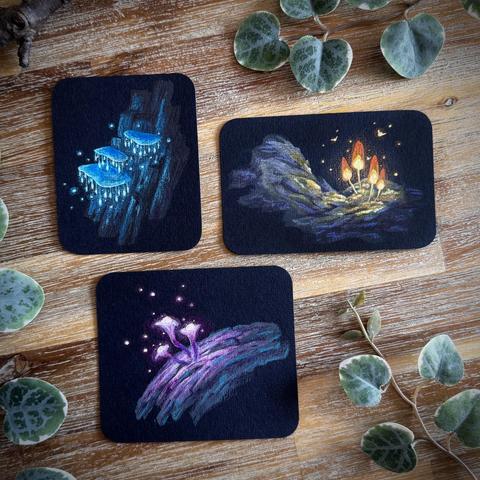


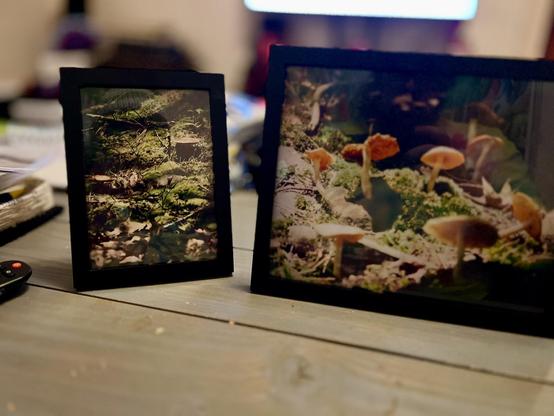
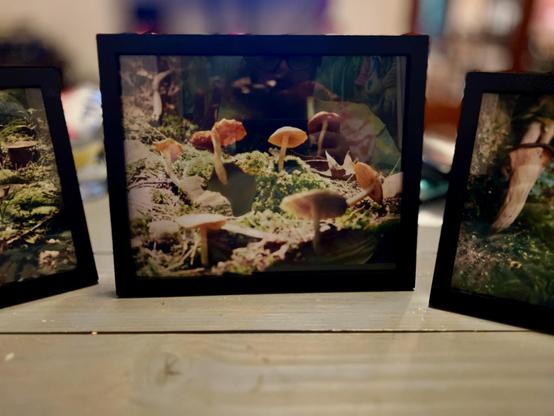
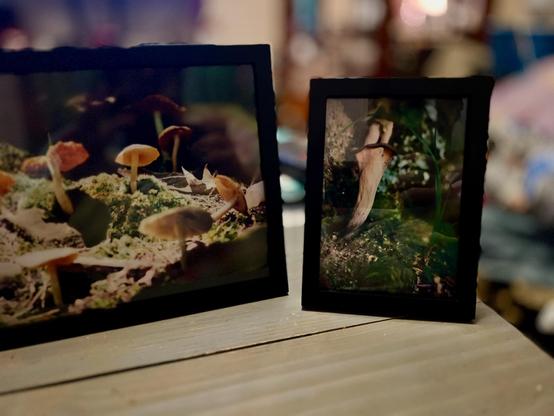
 And after just the right amount of rain...
And after just the right amount of rain... Morchella esculenta in its native habitat.
Morchella esculenta in its native habitat.